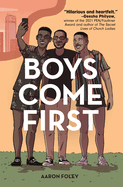
| Publisher: | Belt Publishing | |
| Genre: | General, Romance, African American & Black, LGBTQ+ - Gay, Fiction, Gay, LGBTQ+ | |
| ISBN: | 9781953368256 | |
| Pub Date: | May 2022 | |
| Price: | $17.95 |
| Starred | Fiction |
by Aaron Foley
With Boys Come First, Aaron Foley (How to Live in Detroit Without Being a Jackass) offers a delightful novel about romantic and career ambitions, friendship and the particular charms of and challenges faced by gay Black millennial men in Detroit. Chapters alternate perspectives among a lovable trio of friends.
Readers first meet Dominick as he departs New York City's Hell's Kitchen in a fluster: the start-up advertising firm he'd taken a chance on has just failed, immediately before he walked in on his boyfriend of eight years with another man. Dom flees home to Detroit to lick his wounds and reconnect with his old friend Troy. Troy teaches sixth grade at a charter school, eschewing his father's considerable wealth in favor of giving back to the community, but he's frustrated in his relationship with a domineering boyfriend, and the school's charter is now under threat. Feeling a little stagnant, Troy has picked up a mild-to-moderate cocaine habit. Meanwhile, Troy's college friend Remy has styled himself as "Mr. Detroit," a real estate prodigy and local celebrity: outwardly successful, but struggling to find meaningful connection with a partner who wants more than sex.
Boys Come First is rich in flavor and detail, benefiting from Remy's comprehensive knowledge of Motor City neighborhoods, Troy's hyperlocal concerns for his school and Dom's perspective as he returns from afar. Foley's novel shows range, with its fun, silly and pathos-filled handling of the love-and-sex storylines, serious commentary on social issues and an endearing representation of sincere (if troubled) friendships. --Julia Kastner, librarian and blogger at pagesofjulia
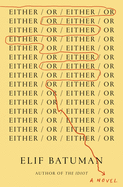
| Publisher: | Penguin Press | |
| Genre: | Women, Literary, Coming of Age, Fiction | |
| ISBN: | 9780525557593 | |
| Pub Date: | May 2022 | |
| Price: | $27 |
| Starred | Fiction |
by Elif Batuman
Readers who loved the intellectual musings of The Idiot, Elif Batuman's first novel, will be happy to know that Selin, its heroine, is back for her sophomore year at Harvard in Either/Or. Batuman borrowed a title from Dostoevsky earlier; this time it's Kierkegaard. In autumn 1996, Selin, a student of Russian literature, picks up a copy of Kierkegaard's classic and reads its famous line: "Either, then, one is to live aesthetically or one is to live ethically." She finds that concept "tremendously compelling"--a life dedicated to art instead of having kids and making money. And with that, Batuman and Selin begin another exploration of sex, literature and philosophy. It's the continuation of the story of an apprentice writer struggling to turn acquaintances into fictional creations and wondering if her work is imaginative or dully appropriative.
Interspersed among cultural references that range from André Breton to Frog and Toad are the people Selin knows and their effect on her life. There's Ivan, the math student with whom she is not so secretly infatuated; the classmates whose sexual experiences make Selin lament her lack thereof; her supportive mother; and citizens she meets on a trip to Turkey. Even readers who feel Flaubert was closer to the mark than Kierkegaard when he counseled being orderly in one's life in order to be fierce and original in one's work--as if it's not a question of either/or--will savor this novel. Either/Or is that rare second novel that is superior to the first. --Michael Magras, freelance book reviewer
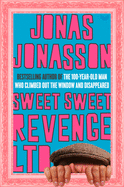
| Publisher: | HarperVia | |
| Genre: | Humorous, Black Humor, Absurdist, Fiction, Action & Adventure | |
| ISBN: | 9780063072152 | |
| Pub Date: | May 2022 | |
| Price: | $27.99 |
| Fiction |
by Jonas Jonasson, trans. by Rachel Willson-Broyles
Jenny and Kevin are strangers with one thing in common: they've both been horribly wronged by the same man. Fate brings the young couple together to fix their situation in the dark but uproariously funny Sweet Sweet Revenge Ltd by Jonas Jonasson, translated from the Swedish by Rachel Willson-Broyles.
Smooth-talking narcissist Victor bullies the owner of an art gallery into giving him a managerial position and quickly marries the owner's daughter, Jenny, though Victor continues seeing a prostitute. Ten years later, that woman, now dying, reappears with Victor's son, Kevin, and demands Victor provide financial support. Victor makes Kevin live in a shack and sustains the boy with weekly pizza deliveries. On Kevin's 18th birthday, Victor abandons him in the wilds of Kenya, hoping lions will eat him. But Kevin is rescued by Ole Mbatian, a Maasai warrior who becomes the father Kevin never had. The relationship is harmonious until a misunderstanding involving circumcision causes Kevin to return to his old shack, where he finds Jenny. She's been living there since her father died and Victor tricked her into signing over the gallery to him, leaving her penniless. She and Kevin plot to right the wrongs done to them.
Jonasson (Hitman Anders and the Meaning of It All) enlightens readers to the universe's humorous manner of exacting karma. Delighting in the killing of even a fictional character is morally questionable, but what if the character is evil, the demise involves a jar of lingonberry jam and the deed is done in the name of young love? This author has a wickedly fun way of saying it's okay. --Paul Dinh-McCrillis, freelance reviewer
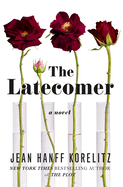
| Publisher: | Celadon | |
| Genre: | Women, Family Life, Coming of Age, Fiction, Siblings | |
| ISBN: | 9781250790798 | |
| Pub Date: | May 2022 | |
| Price: | $28 |
| Fiction |
by Jean Hanff Korelitz
Jean Hanff Korelitz follows her wickedly clever novel The Plot (reviewed below) with The Latecomer, which may lack a traditional plot, yet has multitudes to recommend it just the same. By dint of her mastery of crafting a scene, Korelitz (You Should Have Known) manages to convince readers that whether characters find their peace matters as much as whether a character is, say, found guilty of plagiarism.
The Latecomer is narrated by Phoebe Oppenheimer, the younger sibling of the Oppenheimer triplets, who were conceived through in vitro fertilization in 1981. (Phoebe's "absurdly late appearance" nearly two decades later "screamed family crisis," as one of the triplets puts it, and fairly.) As if traumatized by their forced togetherness in utero, the triplets have--to their mother's enduring despair--spent their lives trying to get away from one another. Harrison railed against the liberalism of his secular Jewish upbringing in Brooklyn Heights and, rather than attend Cornell, his father's alma mater, opted for a conservative two-year college before moving to Harvard. Conversely, Sally and Lewyn went to Cornell, although so determined was Sally not to acknowledge her kinship with Lewyn that she didn't tell her roommate, who was dating him, that he was her brother.
Why all this intra-fraternal rage? That's what Phoebe is trying to figure out. The Latecomer can read like a collection of funny stories, with episodes that elucidate character and sparkle with dialogue-rich scenes that touch on politics, religion, race, privilege and sexuality, but they don't recalibrate the novel's path. That's okay: the occasional telegraphing from Phoebe can feel like a clarifying gut punch to happily unsuspecting readers. --Nell Beram, author and freelance writer
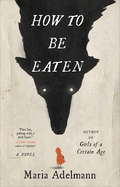
| Publisher: | Little, Brown | |
| Genre: | Women, Fairy Tales, Folk Tales, Legends & Mythology, Literary, Fiction | |
| ISBN: | 9780316450843 | |
| Pub Date: | May 2022 | |
| Price: | $28 |
| Fiction |
by Maria Adelmann
Maria Adelmann reimagines the victims of classic fairy tales as modern-day heroines of their own stories in How to Be Eaten, a darkly comedic novel that explores the power of storytelling to shape--and reshape--individual lives.
An invitation is sent to a group of women with strange backstories, asking them to participate in experimental group narrative therapy. In walks Bluebeard's girlfriend, the only surviving lover of the tech billionaire-turned-serial killer; a newly empty-nester whose husband is known as a good, kind hero; a slightly deranged woman named Ruby, who wears the grungy pelt of a wolf for a coat; Gretel, "the one from the strange kidnapping story that captivated the nation more than two decades before"; and a young woman flashing an enormous engagement ring. Week by week, the women return to tell one another their stories--of being kidnapped and threatened, wooed and trapped, corralled and manipulated in any variety of ways. Beyond their true stories, however, they start to explore how they each came into the public eye and in so doing, reveal how each of their stories had been re-framed by the attention paid to it by outsiders.
How to Be Eaten sweeps readers up not in the details of each woman's backstory but in the ways those misconstrued details have been used against them. Adelmann invites readers to think about the power of stories and storytelling, and the often fine line between making space for others' stories and making entertainment (and profit) out of the same. This sardonic, poignant novel is a whip-smart invitation to reimagine familiar fairy tales in a modern age. --Kerry McHugh, freelance writer
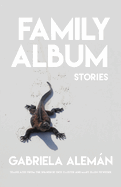
| Publisher: | City Lights | |
| Genre: | Women, World Literature, Short Stories (single author), South America (General), Literary, Fiction | |
| ISBN: | 9780872868823 | |
| Pub Date: | May 2022 | |
| Price: | $15.95 |
| Fiction |
by Gabriela Alemán, trans. by Dick Cluster, Mary Ellen Fieweger
Family Album, from award-winning author Gabriela Alemán, is a shrewd, beguiling collection. In eight genre-defying stories, the Brazil-born, Ecuador-based Alemán deftly confronts push-button topics like colonialism, identity and religion. Dick Cluster, who translated Alemán's novel Poso Wells (2018), returns here with Mary Ellen Fieweger to provide a smooth English translation.
Immediately notable are Alemán's terse titles that might initially seem oblique, but connections--ironic, sly and downright guffaw-inducing--bring rewarding reveals to careful readers. The opening story, for example, is "Baptism" and begins with a sunken treasure hunt using "Robinson Crusoe's map," and settles into an 81-year-old's hopeful longing to breathe underwater, despite having a single lung. "Family Outing" exposes a group of missionaries, dropping in via helicopter on an isolated Amazonian tribe--arriving in the name of God, armed and dangerous. In "Marriage," a new widow, who thought she'd married a "loser," learns the dead man was a wealthy coke addict (perhaps dealer) who had children she never knew existed. A woman in "Honeymoon" brings home a distraught stranger from a documentary screening only to be told after she sleeps with him that he's that Lorena's husband, John Wayne Bobbit. The closing "Moving Day" turns out to be the story of a not-so-saintly possession that necessitates a mysterious suitcase delivery from Ecuador to Puerto Rico.
At approximately 100 pages, Family Album is surprisingly slim for the absorbing adventures contained within. That Alemán (Humo) proves so deftly misleading--"people assume too many things, one of which is that somebody who writes always tells the truth," a character observes--only heightens the satisfaction at collection's end. --Terry Hong, Smithsonian BookDragon
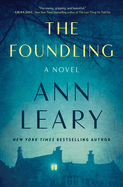
| Publisher: | Marysue Rucci/Scribner | |
| Genre: | Women, General, Literary, Fiction, Historical | |
| ISBN: | 9781982120382 | |
| Pub Date: | May 2022 | |
| Price: | $27.99 |
| Fiction |
by Ann Leary
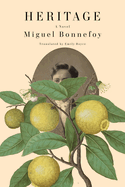
| Publisher: | Other Press | |
| Genre: | Hispanic & Latino, World Literature, Cultural Heritage, Sagas, France - 21st Century, Magical Realism, General, Literary, Fiction, Historical | |
| ISBN: | 9781635421828 | |
| Pub Date: | May 2022 | |
| Price: | $15.99 |
| Science Fiction & Fantasy |
by Miguel Bonnefoy, trans. by Emily Boyce
Novelist Miguel Bonnefoy's Heritage, translated from the French by Emily Boyce, is a compact yet engaging intergenerational saga that follows one family's triumphs and travails in Santiago de Chile. In the late 1800s, Lazare Lonsonier's father emigrates from France to Chile and launches what becomes a successful wine business in the Andes. But when World War I begins, Lazare takes up the call to defend France, facing nightmarish conditions and impossible moral dilemmas. Lazare, returning to his childhood home on Calle Santo Domingo, marries and perpetuates a family line that includes his aviatrix daughter, Margot, and her radical son, Ilario Da, all of whom must face the impossible decisions and interpersonal struggles of the wars and the internal conflicts to come.
The novel, despite its fast pace and concise length, captures the sweeping and poetic promise of any great family epic. With an evocative attention to detail and an eye for those transcendent moments that link lives across time and space, Bonnefoy (Black Sugar) has a talent for communicating both the minute and grand. Because the novel's well-crafted and emotionally resonant characters take center stage, their lives guide readers through the epic nature of major historical events via the intimate experiences of personal transformation. Though the portrait of intercontinental and generational struggle may be this novel's initial appeal for audiences, it is the mesmerizing and enchanting precision of Bonnefoy's writing--the scent of lemons that haunts Lazare or the sound of bird wings flapping in the aviary of Margot's mother--that will linger with readers. --Alice Martin, freelance writer and editor
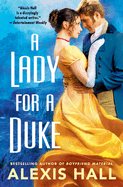
| Publisher: | Forever | |
| Genre: | Historical - Regency, LGBTQ+ - Transgender, Romance, Transgender, General, Fiction, Historical, LGBTQ+ | |
| ISBN: | 9781538753750 | |
| Pub Date: | May 2022 | |
| Price: | $15.99 |
| Starred | Romance |
by Alexis Hall
Alexis Hall brings his trademark wit and depth of emotion to Regency-era England in A Lady for a Duke, a romance between a transgender woman and her former best friend, the Duke of Gracewood. For two long years Gracewood has thought Viola Carroll dead; everyone believes she lost her life at the Battle of Waterloo. In truth, Viola was nursed back to health by local farmers and seized the opportunity to throw off the constraints of her role as Viscount Marleigh and truly live her life as a woman.
Viola agrees to accompany her sister-in-law, Lady Marleigh, to Gracewood's home in order to help Gracewood's sister make her society debut, even though--or perhaps because--it will force Viola to face her best friend and true love. Though she's heard a bit about Gracewood's condition, Viola is devastated to see him addicted to laudanum and alcohol, poorly managing pain from a severe leg injury and grief over the loss of her. Viola, compelled by an overwhelming mix of guilt and love, brings him back to himself, all the while fearing the day he recognizes her under her makeup and wardrobe.
Fortunately, Hall (Boyfriend Material) doesn't drag out that discovery, but the depth of hurt on both sides is astounding. Hall has a gift for humor but is also skilled at composing passages that evoke the deepest emotions, whether the ache of long-denied love, crushing grief or the relief and soulful joy of being accepted and adored as one's most authentic self. --Suzanne Krohn, librarian and freelance reviewer
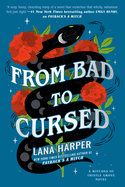
| Publisher: | Berkley | |
| Genre: | Romantic Comedy, Romance, Fiction, Paranormal - Witches | |
| ISBN: | 9780593336083 | |
| Pub Date: | May 2022 | |
| Price: | $16 |
| Romance |
by Lana Harper
Lana Harper's From Bad to Cursed, the sequel to Payback's a Witch, is another enchanting paranormal rom-com set in the charming, witchy small town of Thistle Grove. Until one family took over, Thistle Grove's four founding families lived mostly in harmony, each focused on a different branch of magic and building their businesses accordingly. The family of Isidora (Issa) Avramov works with death magic--necromancy, speaking to spirits and summoning demons--so when a witch from another family is hexed in public, the town immediately suspects them. Veterinarian Rowan Thorn and Issa have been at odds ever since he fired her from her volunteer gig at the local animal shelter but, now that someone has tried to kill his cousin, they must work together to bring the culprit to justice.
In pairing a Thorn and an Avramov, Harper (Poison Priestess, writing as Lana Popović) plays with the enemies-to-lovers and opposites-attract dynamic: Rowan's magic is that of life, growth and nature, while Issa's is of death. The strongest scenes are those in which the main characters experience each other's gifts and learn to appreciate both the magic and the person wielding it. The romance itself develops gradually and, once again, Harper dedicates much of the novel to relationships among women and family. Still, Rowan and Issa face the dramatic climactic battle together, their respective skills necessary for peace and community.
Harper cuts the sweetness with just the right amount of spookiness, resulting in a paranormal-lite romance that can be enjoyed any time of year.--Suzanne Krohn, librarian and freelance reviewer
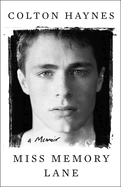
| Publisher: | Atria | |
| Genre: | Biography & Autobiography, Personal Memoirs, Entertainment & Performing Arts, LGBTQ+ | |
| ISBN: | 9781982176174 | |
| Pub Date: | May 2022 | |
| Price: | $28 |
| Biography & Memoir |
by Colton Haynes
Most celebrity autobiographies seem written with one eye on keeping their public image untarnished, which makes Colton Haynes's memoir all the more jaw-dropping. Miss Memory Lane is a raw, emotionally vulnerable and shockingly frank tale of family malfunction, rampant drug and alcohol abuse and poor self-esteem that leads to trouble.
Haynes was raised in a highly dysfunctional and violent home. His parents met in a Texas rehab. His father had previously been married five times and had three children, and his mother had never been married but had two kids with two different men. From a very early age, Haynes was sexually active. His first sexual experience was at the age of six with his father's adult brother. "This was the first time I had ever felt wanted," Haynes writes. He craved "the feeling of being desired, the feeling of getting someone else's attention." At age 14, he began a sexual relationship with a 42-year-old policeman. "I thought once I'd had him, I would be satisfied," he writes. "But I wasn't. I wanted more." And he certainly gets more. "I was sleeping with anyone who locked eyes with me," he adds later. At 15, he joined a top modeling agency, which led to acting roles, including Teen Wolf and Arrow. Agents and his support team encouraged him to go back into the closet and hide his sexuality. This left him feeling isolated, wrecked his already fragile self-worth and resulted in more drinking and Adderall abuse.
This unrelenting and compelling memoir is by an actor unafraid to unmask his demons. --Kevin Howell, independent reviewer and marketing consultant
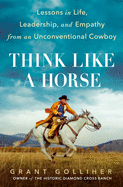
| Publisher: | Putnam | |
| Genre: | Self-Help, Personal Growth, Nature, Leadership, Happiness, Animals, Business & Economics, Horses | |
| ISBN: | 9780593331927 | |
| Pub Date: | May 2022 | |
| Price: | $28 |
| Psychology & Self-Help |
by Grant Golliher
Can working with horses teach humans lessons in understanding, communication and empathy? "Horse whisperer" Grant Golliher certainly thinks so. In Think Like a Horse: Lessons in Life, Leadership, and Empathy from an Unconventional Cowboy, Golliher generously shares with readers the valuable work he does with both horses and people at his Diamond Cross Ranch in Wyoming. His job there as a horse trainer translates into leadership lessons for people, from corporate executives to veterans once again trying to find their place in society. As he tells stories about his own life, as well as the people and horses he has known, Golliher demonstrates how "horses have an extraordinary ability to reveal people to themselves" and thus "become a powerful catalyst for personal growth and leadership development."
At the heart of Golliher's methods is encouraging people to learn to think like a horse and, using that understanding, to "cultivate a willing partnership based on mutual trust and respect, fairness, and clear boundaries." Respect, boundaries and trust are themes prevalent in the anecdotes shared, all underscored by good listening, understanding and forgiveness. Golliher (Chasing a Dream) emphasizes that this is not a proscriptive method or system; instead, it's a philosophy based in empathy for interacting with others in leadership roles and other relationships that can "guide you to the right solutions for whatever situation you happen to be in." By thinking like a horse, people can bring more trust, respect and empathy into their relationships. --Michelle Anya Anjirbag, freelance reviewer
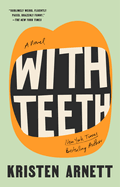
| Publisher: | Riverhead | |
| Genre: | Family Life, General, Literary, Lesbian, Fiction, LGBTQ+ | |
| ISBN: | 9780593191521 | |
| Pub Date: | May 2022 | |
| Price: | $16 |
| Now in Paperback |
by Kristen Arnett
With Teeth, Kristen Arnett's second novel (after her Mostly Dead Things), returns to central Florida for a frank, sometimes dark, often funny portrayal of queer parenthood and midlife from a lesbian mom with a faltering marriage and an unfathomable child.
Sammie turns her back at a local park, and her four-year-old son, Samson, happily walks off with a probable child abductor. She intervenes promptly, but his readiness to leave her for a stranger stays in her mind for years as she struggles with Samson's apathetic and occasionally cruel behavior (he leaves a creepy doll in her bed as a fourth grader, and gets in trouble at work for spitting in someone's drink as a teenager). Her charismatic, successful wife, Monika, provides financially but downplays Sammie's concerns about their son: "Monika got to be the dad-mom, the fun one...." As the years pass, Sammie faces the isolation of parenthood, aging and the heartache of a failing marriage with her own awkward, often self-destructive, always credible style.
Arnett's character-driven narrative focuses on Sammie's point of view, with occasional windows into those of minor characters. These glimpses show Sammie as she appears to others, usually in contrast to the mistaken assumptions she projects onto their reactions. Readers will cringe in sympathy as Sammie self-soothes using alcohol and other means, often followed by public embarrassment. Arnett walks a fine line between humor and pathos, sensitively conveying Sammie's loss of a social circle, her fear that others will judge a lesbian couple unfit to parent a boy, and her abdication of self. Complicated, fearless and confidently messy, With Teeth--named a Best Book of the Year by the Washington Post--should resonate with any reader who has ever felt like a stranger in their own life. --Jaclyn Fulwood, blogger at Infinite Reads
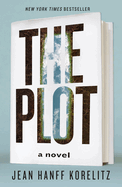
| Publisher: | Celadon | |
| Genre: | Psychological, Family Life, General, Suspense, Thrillers, Fiction | |
| ISBN: | 9781250790750 | |
| Pub Date: | May 2022 | |
| Price: | $17.99 |
| Now in Paperback |
by Jean Hanff Korelitz
Jean Hanff Korelitz's staggeringly good literary thriller The Plot begins as New Yorker Jacob Finch Bonner arrives at his three-week teaching gig at a low-residency MFA program in Vermont. It feels like--and is--a step back for "the once promising author of the 'New & Noteworthy' (New York Times Book Review) novel The Invention of Wonder." Jake's writing career is at a standstill: his follow-up novel tanked, and he hasn't published since.
One consolation of his teaching job is that Jake knows his work is at least a cut above the puerile prose of his students--that is, until, during a teacher-student chat, Evan Parker shares aloud a synopsis of his planned novel. Jake can't disagree with Evan's appraisal: "This story I'm writing, it's like, a sure thing." But the prospect of its publication seemed to evaporate with Evan's death, which Jake learns about while poking around on the Internet a couple of years later.
Fast-forward three more years, and Jake, having convinced himself of the uprightness of stealing Evan's plot ("A great story... wanted to be told"), finds his name on the cover of two million copies of the New York Times bestseller Crib. Jake is certain that only he knows the book's origin--until the day he receives a disturbing e-mail, the first of several of an increasingly worrisome kind.
In The Plot--a New York Times Notable Book of 2021--Korelitz (You Should Have Known) demonstrates masterful control with her incremental release of big reveals. As they did in the the novel's fictional universe, Oprah and Spielberg would do well to rally around Korelitz's lollapalooza. --Nell Beram, author and freelance writer
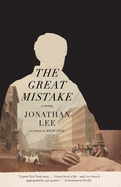
| Publisher: | Vintage | |
| Genre: | Psychological, General, Biographical, Fiction, Historical, Gay, LGBTQ+ | |
| ISBN: | 9780593081013 | |
| Pub Date: | May 2022 | |
| Price: | $17 |
| Now in Paperback |
by Jonathan Lee
The Great Mistake--one of the Guardian's Best Books of the Year--begins with the murder of the historical figure Andrew Haswell Green (1820-1903), a city planner who was known in his day as the Father of Greater New York. Jonathan Lee's wondersome novel proceeds to piece together the events that led to Green's death, but the book's central mystery is psychological, not circumstantial: Why did someone so renowned for his civic contributions lead such an emotionally unfulfilling life?
Chapters dedicated to the city's investigation into Green's murder twine with chapters charting his past, from his inauspicious beginnings on a Massachusetts farm ("His family feared he might one day succumb to the catastrophe of being a poet") through his maturation into the person who helped establish such enduring Manhattan landmarks as Central Park and the Metropolitan Museum of Art. Green sought to "create work for himself that might fill him with pride instead of shame," but his shame wasn't restricted to his humble origins: Lee writes heartrendingly of a closeted romance between Green and Samuel J. Tilden, who would become the governor of New York.
Lee (High Dive) has done a masterly job reviving and embroidering the life of an undersung public figure who crossed paths with other notables; The Great Mistake features cameos by, among others, Green's occasional adversary Frederick Law Olmsted. With unshowy dexterity, Lee conjures the inner life of a man widely regarded as, the novel suggests, "a person who, in his last twenty years, had campaigned tirelessly against the idea of isolation, while himself remaining isolated." --Nell Beram, author and freelance writer
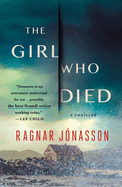
| Publisher: | Minotaur | |
| Genre: | Police Procedural, Mystery & Detective, Crime, International Crime & Mystery, Thrillers, Fiction | |
| ISBN: | 9781250830586 | |
| Pub Date: | May 2022 | |
| Price: | $17.99 |
| Now in Paperback |
by Ragnar Jónasson
With his thrillers centered on cop Ari Thór Arason (Snowblind; Rupture) and detective Hulda Hermannsdóttir (The Darkness; The Island; The Mist), Ragnar Jónasson has proved himself to be a go-to author for Nordic noir. The Girl Who Died delivers Jónasson's usual sublime atmospheric puzzle but with bonus chills, courtesy of an apparently haunted house.
It's 1985, and 30-year-old substitute teacher Una is languishing in Reykjavík when she reads a seductive ad: "Teacher wanted at the edge of the world." She lands the winter-term-only job, which brings her to the remote village of Skálar, population 10 per the last census. The job includes accommodations in the home of Salka, a single woman on the local council, and Salka's seven-year-old daughter, one of the two kids Una will teach. The job is a cakewalk, although Una wishes the villagers weren't quite so obvious with their opinion of her as an interloper, and she could do without the intermittent confrontations with a ghostly presence at Salka's house. When tragedy strikes at the village Christmas concert, Una must deal with the obfuscating darkness of both Skálar in winter and its citizens.
The Girl Who Died is interwoven with passages recounting a notorious murder in Iceland that bears on the happenings in tucked-away Skálar. Not for the first time, Jónasson demonstrates a gift for capturing the particular loneliness that attends physical isolation. Of course, Una's alienation is exacerbated by the personal demons she's fighting, not all of which come from the bottle she keeps handy. --Nell Beram, author and freelance writer
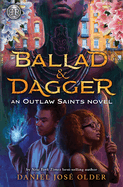
| Publisher: | Rick Riordan Presents/Disney-Hyperion | |
| Genre: | People & Places, Fantasy, Contemporary, Young Adult Fiction, United States - Hispanic & Latino, Action & Adventure | |
| ISBN: | 9781368070829 | |
| Pub Date: | May 2022 | |
| Price: | $18.99 |
| Starred | Children's & Young Adult |
by Daniel José Older
This magnetic and memorable urban fantasy features a young musician from a diaspora, who is destined to bring his people home.
Fifteen years ago, the free Caribbean island of San Madrigal sank, and its residents--a diverse community of Sephardic Jews, Santería practitioners and pirates--migrated to Brooklyn, N.Y. They've been "a lost diaspora from a lost island" ever since. Sixteen-year-old Mateo, whose childhood was spent traveling with his doctor parents, feels even further removed from home. He tries to combat his "double diaspora" by becoming a "kamero" (traditional musician) and learning the intricacies of his people's songs, but he still feels stuck somewhere in between. Until the night of the Grand Fete, that is, when one of the community leaders announces it is time to reveal "the three initiated, fully awakened children of the original spirits of San Madrigal." This trio is prophesied to raise the island and, unbeknownst to him, Mateo is one of them.
In Ballad & Dagger, the first in a duology, Daniel José Older (Dactyl Hill Squad; Shadowshaper series) artfully explores themes of diaspora, colonialism, colorism and identity while immersing readers in a thoroughly established political system, history and culture. Older takes his time explaining San Madrigal's mythology and its people and effortlessly knits Spanish words into the text, cementing readers in Mateo's world. This YA action-adventure is given a layer of ethereal dreaminess by Mateo's attempts to relate to his home and its people through music ("Every song has its beating heart, but our people are a song unto themselves"). A captivating urban fantasy. --Lana Barnes, freelance reviewer and proofreader
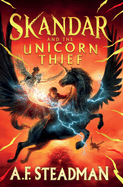
| Publisher: | Simon & Schuster Books for Young Readers | |
| Genre: | Fantasy & Magic, Animals, Dragons, Unicorns & Mythical, Juvenile Fiction, Action & Adventure | |
| ISBN: | 9781665912730 | |
| Pub Date: | May 2022 | |
| Price: | $18.99 |
| Starred | Children's & Young Adult |
by A.F. Steadman
Mainlanders believed unicorns were only a myth. But when the Islanders revealed their secret--unicorns are real--Mainlanders learned "unicorns don't belong in fairy tales; they belong in nightmares." The magical creatures of lore are not for the fainthearted in this exhilarating and wildly imaginative middle-grade fantasy debut from A.F. Steadman.
Unicorns are dangerous, bloodthirsty and immortal. They become slightly less vicious when bonded with a rider, so destined children are found and trained to channel the creature's magic. At 13, children take the Hatchery exam--those who pass may attempt "to open the Hatchery door on the Island" and find a unicorn egg. Skandar has watched years of rider/unicorn pairs competing in the Chaos Cup and dreams of joining their ranks. Thus, he is devastated when his teacher inexplicably denies him the test and astonished when a mysterious rider whisks him away to the Island anyway. But nothing there is as he expected. Unicorn riding isn't all winning challenges--Skandar must learn to fight. The Islanders are terrified of a shadowed figure called the Weaver and Skandar must learn how to work as an effective battle team with his unpredictable unicorn, Scoundrel's Luck. As Skandar works to uncover the Weaver's secrets, he realizes he may be the Island's only hope.
Steadman fantastically reinvents the traditional Western unicorn mythology by inverting the classic images--serene, majestic, noble, gentle, sparkly--and presenting instead a creature that is ferocious, deadly and nearly unstoppable. Skandar and the Unicorn Thief is filled with incredible worldbuilding, a fully realized system of magic and an unforgettable cast of riders and unicorns. --Kyla Paterno, freelance reviewer

| Publisher: | Neal Porter Books | |
| Genre: | People & Places, Cooking & Food, Emigration & Immigration, United States - Asian American & Pacific Islander, Social Themes, Juvenile Fiction | |
| ISBN: | 9780823446148 | |
| Pub Date: | May 2022 | |
| Price: | $18.99 |
| Starred | Children's & Young Adult |
by Andrea Wang, illust. by Hyewon Yum
In her author's note, Andrea Wang (Magic Ramen; Watercress), the daughter of Chinese immigrants, recalls her wonderment at learning that the word for "tea" is similar in many languages: "Why was this?" Readers of her gladdening picture book Luli and the Language of Tea, illustrated by Hyewon Yum (Saturday Is Swimming Day; Not Little), don't need to know why to grasp Wang's message: that generosity can be a universal language.
In "the playroom" (a childcare classroom per a sign by the door), Luli is surrounded by other kids who can't speak English, all of whom are playing alone. Today she has come prepared. From her backpack she produces tea-making gear; after she has set up, she calls "Chá!"--"tea" in Chinese. Upon recognizing the word "Chá!," the kids respond with the word for "tea" in their primary languages and then gather around Luli's table. She passes cups of tea to the child beside her, who passes them on and so forth, until... uh-oh: there's no tea for Luli! Happily, the kids have a solution. By story's end, "Luli's teapot was empty, but her heart was full."
Yum demonstrates her facility with colored pencils in Luli'sclassroom scenes and endpapers, in which a glorious spread captures an assortment of teacups, each decorated in a style suited to the country it represents. But the book's most pleasing illustrations are the aerial views of the kids sitting at Luli's table; the intricately decorated teapot may be the centerpiece, but Luli is the star. --Nell Beram, freelance writer and YA author
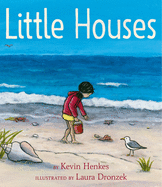
| Publisher: | Greenwillow | |
| Genre: | Animals, Family, General, Science & Nature, Marine Life, Juvenile Fiction, Multigenerational | |
| ISBN: | 9780062965721 | |
| Pub Date: | May 2022 | |
| Price: | $18.99 |
| Children's & Young Adult |
by Kevin Henkes, illust. by Laura Dronzek
In many of Kevin Henkes's books, children long to make a connection with others. But in Little Houses, Henkes and Laura Dronzek's poetic, meditative picture book, the nameless young (human) narrator is happy to keep her marvelous discovery to herself.
When she visits her grandmother's beach house, the narrator feels as though she's being summoned by the ocean: "Sometimes I think someone/ is calling me./ But it's just the waves/ coming in, going out." While the girl and her grandmother are on the beach looking at shells, Grandma reminds her that shells are little houses--"and that," explains the narrator, "gets me thinking." She mulls over how different each shell is and wonders who lives inside them--or is it ghosts? Little Houses offers a series of reflections by a narrator who considers the expedition itself as rewarding as finding answers: "I'd like to know/ what a pelican thinks of a sandpiper/ and if a snowy egret has ever seen snow./ So right now, I'll walk up and down/ the beach/ looking for little houses/ and thinking about everything I don't know."
In his plot-driven picture books, Henkes presents stories that conclude with clarity and understanding. Dronzek, who has previously collaborated with Henkes on other great outdoors-themed titles (When Spring Comes; Summer Song), paints with a sumptuous nautical palette and favors bold, plainly defined imagery. While she is sufficiently awed by the animal kingdom to render birds and sea life realistically, not even a staunch naturalist would begrudge her the occasional smiling pelican. --Nell Beram, freelance writer and YA author
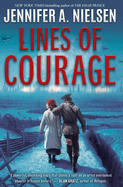
| Publisher: | Scholastic Press | |
| Genre: | War & Military, Europe, Military & Wars, Juvenile Fiction, Historical | |
| ISBN: | 9781338620931 | |
| Pub Date: | May 2022 | |
| Price: | $17.99 |
| Children's & Young Adult |
by Jennifer A. Nielsen
The brutality and complexity of World War I is expressed in Lines of Courage, a gripping, elaborately configured account of the "war to end all wars." The lives of five young protagonists from different countries intertwine as they come of age during the terrible years of war.
This expansive novel is divided into five sections for each of the young people it features but, as the war advances, the breathtaking, heartbreaking stories begin to spill over. The novel begins with the 1914 assassination of Archduke Franz Ferdinand as witnessed by 12-year-old Felix, a Jewish boy from the Austria-Hungary empire, and progresses to the end of the war, almost four-and-a-half years later. Along the way we meet Kara, a British girl who wants to be a Red Cross nurse; Juliette, separated from her family when they are evacuated from their French home; Dimitri, a Russian farm boy sent by his Tsar to the front with no weapon; and Elsa, daughter of a major in the German army. Great Britain, France and Russia are allied against Germany and Austria-Hungary, but these five children are less concerned about hating their enemies than they are with the day-to-day trials of survival.
Jennifer A. Nielsen (A Night Divided; The Traitor's Game series) sensitively conveys both the wretchedness and the hope of an adolescence spent in trenches, caves, prison camps, ambulance trains and even clean, pleasant officer's quarters. It's a lot to take in--but then, so was the Great War. --Emilie Coulter, freelance writer and editor